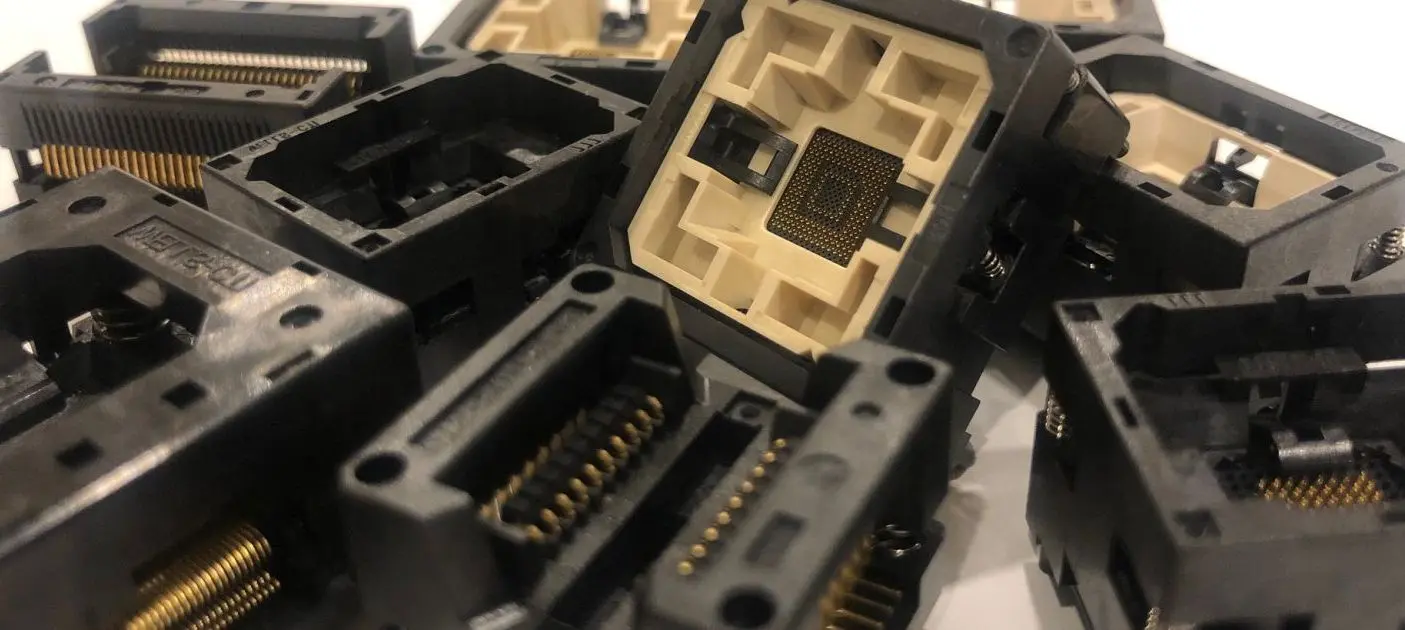What are test & burn-in socket ?
Burn-in is one of testing processes designed to detect failures in semiconductors and reduce potential for defects in the final application. During burn-in, component will undergo extreme operating conditions, including high temperature, voltage and using cycles.
Test & burn-in socket provides semi-permanent connection between device and PCB and exposes a component at a high temperature for a specified time in an attempt to stress all elements of the device at maximum rated operating conditions in order to reveal all stress and time dependent failure modes.
Test & burn-in sockets are typically made with high temperature plastics, conductive metal contacts, and various springs and hardware. We can divide test & burn-in sockets into two main categories: clam-shell and open-top.
Clam-shell socket consist of two parts, a lid and a body. Device under test is placed in the body of socket and when lid is closed, it delivers force to the testing component to actuate the burn-in socket contacts. Clam-shell sockets are usually operated manually and require lower press force to operate.


Open-top burn-in sockets operates in different way. Testing component can be seen from the top (unlike clam-shell type, where testing components is covered by lid during testing), to load socket with component, sockets need to be pressed down to load - and keep pressed down during entire loading process, when released, socket pins will deliver press force to the testing component and actuate burn-in socket contacts. Advantage of open-top burn-in sockets is, it can be operated by robotic handlers, but usually require higher pressing force compare to clam-shell type.
We are cooperating with all major socket manufacturers and custom socket manufacturers - that allows us to cover all requirements from our customers.












